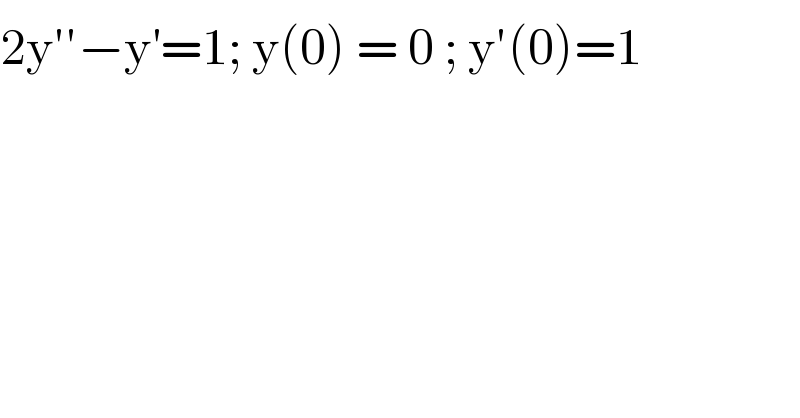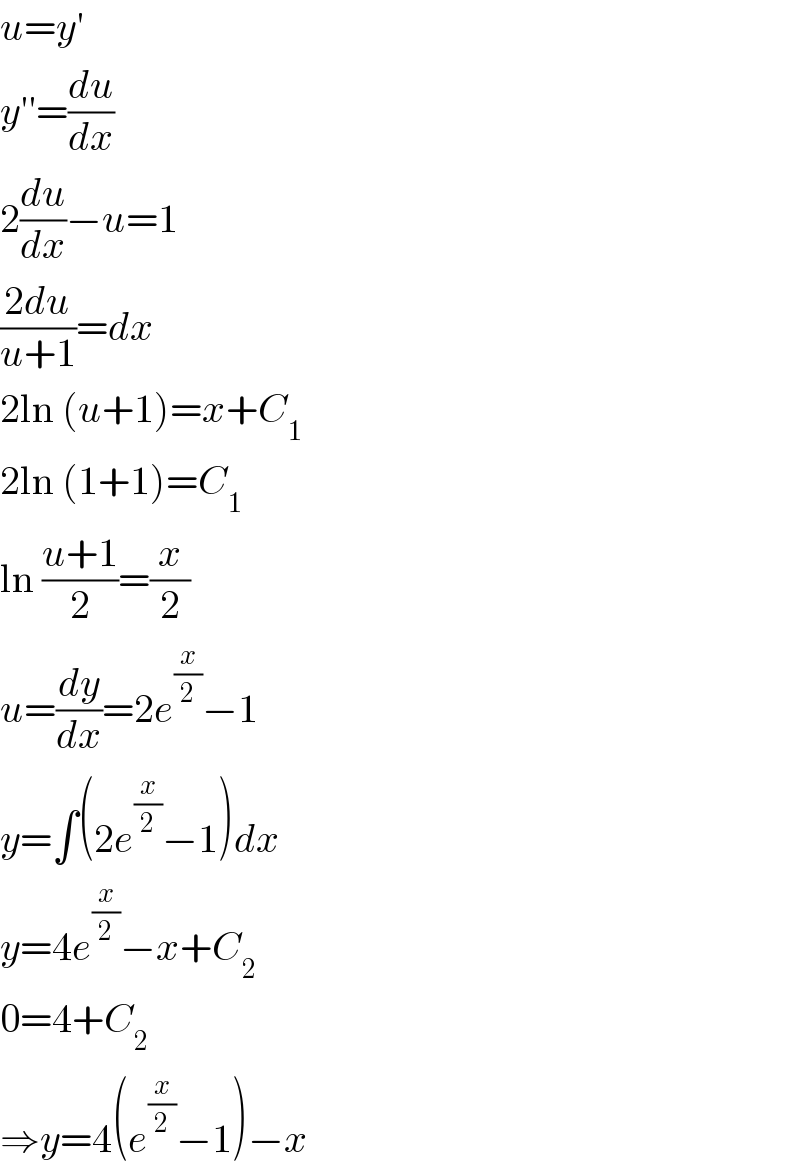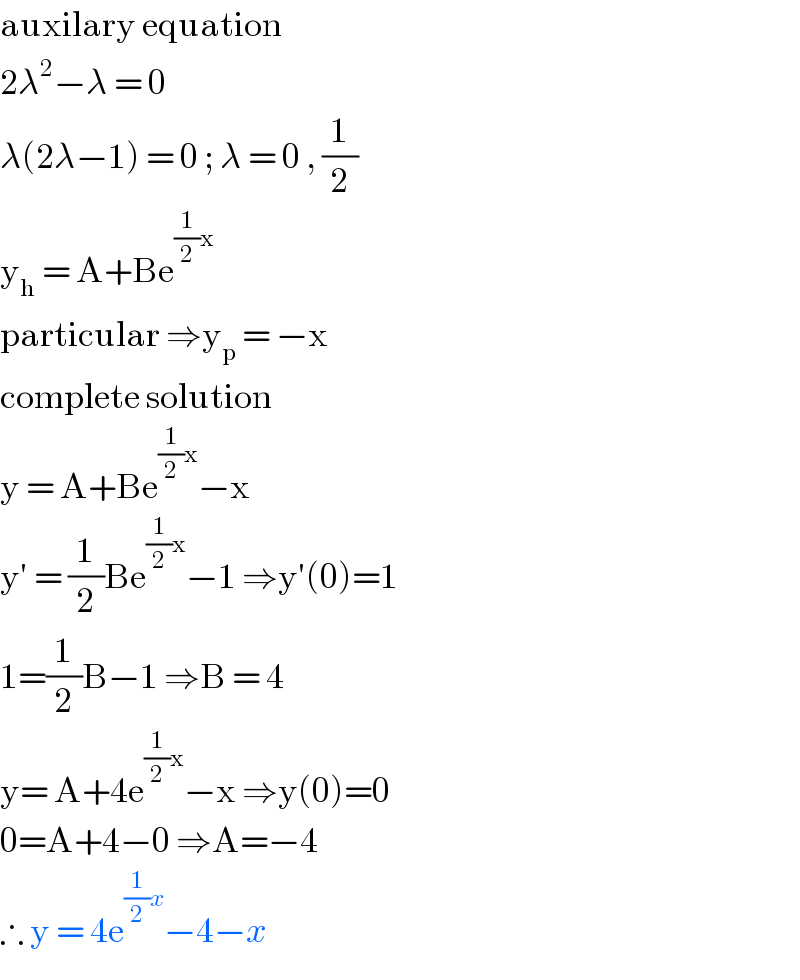
Question and Answers Forum
Previous in Differential Equation Next in Differential Equation
Question Number 95801 by bobhans last updated on 27/May/20

Answered by mr W last updated on 27/May/20

Answered by john santu last updated on 28/May/20

| ||
Question and Answers Forum | ||
Previous in Differential Equation Next in Differential Equation | ||
Question Number 95801 by bobhans last updated on 27/May/20 | ||
 | ||
Answered by mr W last updated on 27/May/20 | ||
 | ||
| ||
Answered by john santu last updated on 28/May/20 | ||
 | ||
| ||